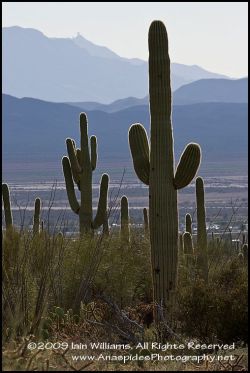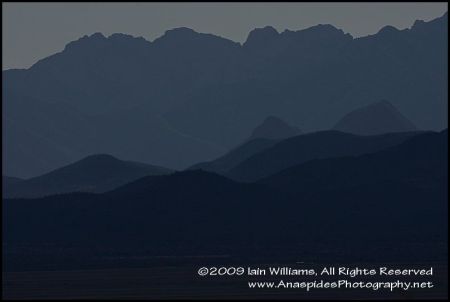Saguaro National Park, Arizona
 Wednesday, February 18, 2009 at 3:37AM
Wednesday, February 18, 2009 at 3:37AM  Saguaro National Park in Arizona is renown for it's iconic cactus called the Saguaro cactus. This cactus predominately only grows in Arizona and Mexico. The cactus can reach 20 feet in height and arms only develop on the cactus after 75 years. As such, many of the cactus plants observed in the park are very old and were about as teenagers when cowboys and Indians roamed the territory.
Saguaro National Park in Arizona is renown for it's iconic cactus called the Saguaro cactus. This cactus predominately only grows in Arizona and Mexico. The cactus can reach 20 feet in height and arms only develop on the cactus after 75 years. As such, many of the cactus plants observed in the park are very old and were about as teenagers when cowboys and Indians roamed the territory.
Finding ideal photographic locations is difficult if you are keen to photograph landscapes with a foreground, middle-ground, and background. This is due to the density of cactus. After searching for a few hours, we settled on producing a pano photograph (compilation of several images stitched together) utilizing the low light of the afternoon sun. The redrock country (scarps, mesas & jump ups) reflects a rich orange light as golden hour approaches (hour before sunset) providing excellent opportunities for photographs.
Of course the Saguaro cactus are not the only flora species in the region; Cholla cactus and other Mammarian Genus cactus can also be easily found in addition to several spring wildlflower species To see these you must be willing to step from the road and make a short hike into the desert. During your short hike your also bound to notice the unusual rock types that you are walking on; many are volcanic in origin. You will also notice something that appears to look like a rock, but is not a rock. This is cyptobiotic soil. The soil (actually a crust) is rich in bacteria and is actually a living organism providing nutrients to the desert soil. These crusts are very important in the development of arid ecosystems so be very careful not to step on the soil as it takes many years to develop, and can be destroyed by walking on it - be careful where you place your feet!
See http://www.nps.gov/archive/care/crypto.htm for further information.




Reader Comments